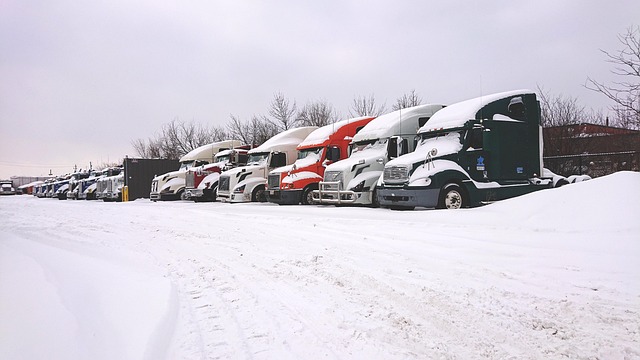Learn how to register your car in California with our step-by-step guide. First, understand the state’s registration requirements for vehicles. Next, gather essential documents for a crucial VIN (Vehicle Identification Number) verification process. After passing VIN check, select the right registration type and submit an application along with fees. Master these steps to ensure a smooth car registration experience in California.
- Understand California Car Registration Requirements
- Gather Necessary Documents for VIN Verification
- Perform Vehicle Identification Number (VIN) Check
- Choose an Appropriate Registration Type
- Submit Application and Pay Fees
Understand California Car Registration Requirements

Before registering your car in California, it’s crucial to understand the state’s specific requirements for vehicle registration. One key aspect is ensuring accurate and up-to-date information, starting with a valid Vehicle Identification Number (VIN) verification. The California Department of Motor Vehicles (DMV) mandates this process as part of its registration procedures. A correct VIN inspection ensures that the vehicle matches all legal standards and belongs to you, preventing fraud and theft.
Additionally, a mobile VIN inspection or mobile vin verifier service can be beneficial for convenience. These services allow you to verify your car’s VIN at your location, saving time and effort compared to visiting a DMV office. By adhering to these requirements, including the VIN verification process with potentially utilizing a mobile vin inspection service, you’ll streamline the car registration process in California.
Gather Necessary Documents for VIN Verification

Before registering your car in California, you’ll need to gather several crucial documents for VIN (Vehicle Identification Number) verification. This process is essential as it ensures the vehicle’s history and authenticity. One convenient way to obtain this verification is through a mobile vin verifier or inspector, which allows for on-site inspections. These professionals can accurately check your car’s VIN details using advanced technology, making the process efficient and stress-free.
For the verification, you’ll require documents such as the vehicle registration certificate from the previous state (if applicable), proof of insurance, and a valid driver’s license. Additionally, ensure you have the purchase agreement or sales receipt, which includes the VIN number. With these documents in hand, you’re well-prepared to navigate the California car registration process, including any required mobile vin inspection or verification steps.
Perform Vehicle Identification Number (VIN) Check

Before registering your car in California, it’s crucial to perform a Vehicle Identification Number (VIN) check. This step is essential for verifying the vehicle’s history and ensuring it meets all legal requirements. You can conduct a VIN verification through various official channels, including online platforms or by visiting a local Department of Motor Vehicles (DMV) office. During this process, you’ll be cross-referencing your car’s unique VIN with detailed records to establish its authenticity and identify any potential red flags.
Consider utilizing mobile vin inspection services for added convenience. These services allow you to get a quick and accurate VIN verification right from your smartphone or tablet. By comparing the results of a mobile vin verification against the vehicle’s documentation, you can have peace of mind knowing that your car is ready for registration without any unexpected issues.
Choose an Appropriate Registration Type

When registering your car in California, understanding the different registration types is essential. The appropriate choice depends on factors like vehicle age, use, and personal needs. For instance, a new car or one less than four years old typically requires a standard registration. Conversely, older vehicles might qualify for a vintage or classic car registration, offering potential tax benefits and simplified maintenance requirements.
A key consideration in this process is vin verification. The Vehicle Identification Number (VIN) inspection ensures the vehicle’s authenticity and history. Using a mobile vin verifier or conducting a thorough vin inspection can help determine eligibility for specific registration types, as well as uncover any hidden issues with the car. This step is crucial for both new and used car owners in California to ensure compliance and peace of mind.
Submit Application and Pay Fees

After gathering all the required documents and ensuring your vehicle meets California’s standards, it’s time to move forward with registration. Submit the Application for Title and Registration (Form DV-140) along with any necessary fees to the DMV. This process can typically be completed online or at a local DMV field office. One crucial step before submitting is conducting a vin verification to ensure the vehicle’s identification number (VIN) matches the vehicle you’re registering.
You have several options for this, including traditional vin inspection services or utilizing a mobile vin verifier for added convenience. Once your application and vin verification are approved, you’ll receive your registration documents in the mail. Keep these records handy, as they confirm your vehicle’s legal status and are essential for future transactions, such as insurance claims or selling the car.
Registering a car in California involves understanding key requirements, gathering essential documents for VIN verification, performing a vehicle identification number check, selecting the right registration type, and submitting applications along with fees. By diligently navigating these steps, you’ll ensure your vehicle complies with state regulations, facilitating a smooth and legal ownership experience. Remember, accurate VIN verification is paramount in California’s car registration process.
